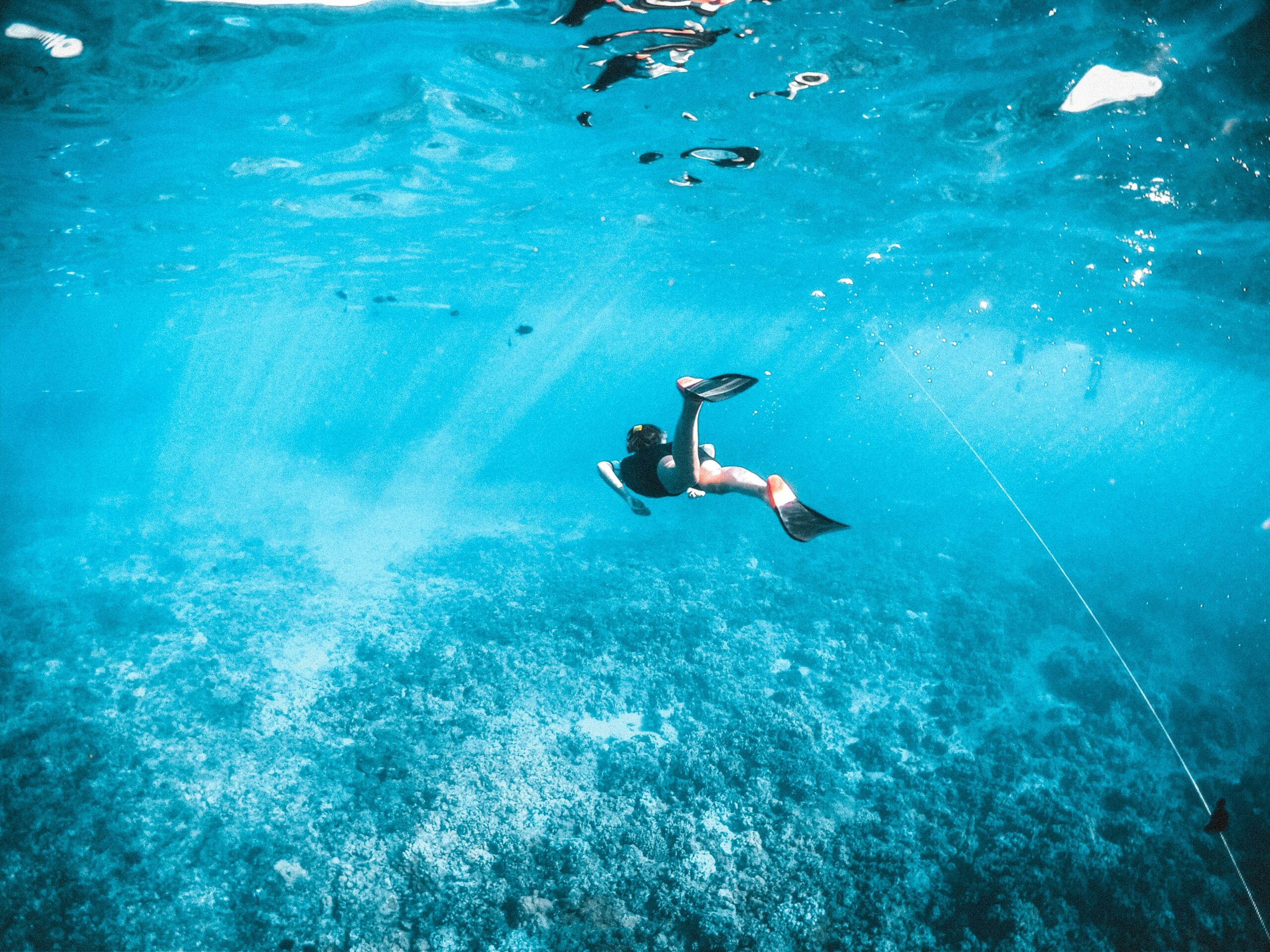In La Jolla summer means fun! However, that’s not to take anything away from the other months of the year; frequently, hot, dry desert winds from the east blow through September, often putting fire fighters on alert. The Santa Ana winds, in turn, highlight October’s welcomed temperate days and cooler nights. Locals consider the tenth month to be climatically the best. If you’re planning to come visit during the sunniest months of the year, great, you can’t beat the weather. However, our Insiders list of things to see and do in La Jolla year round will, without doubt, help you create a memorable itinerary, indoors and out.
Birch Aquarium at Scripps, UC San Diego
There’s Something Fishy About the Place
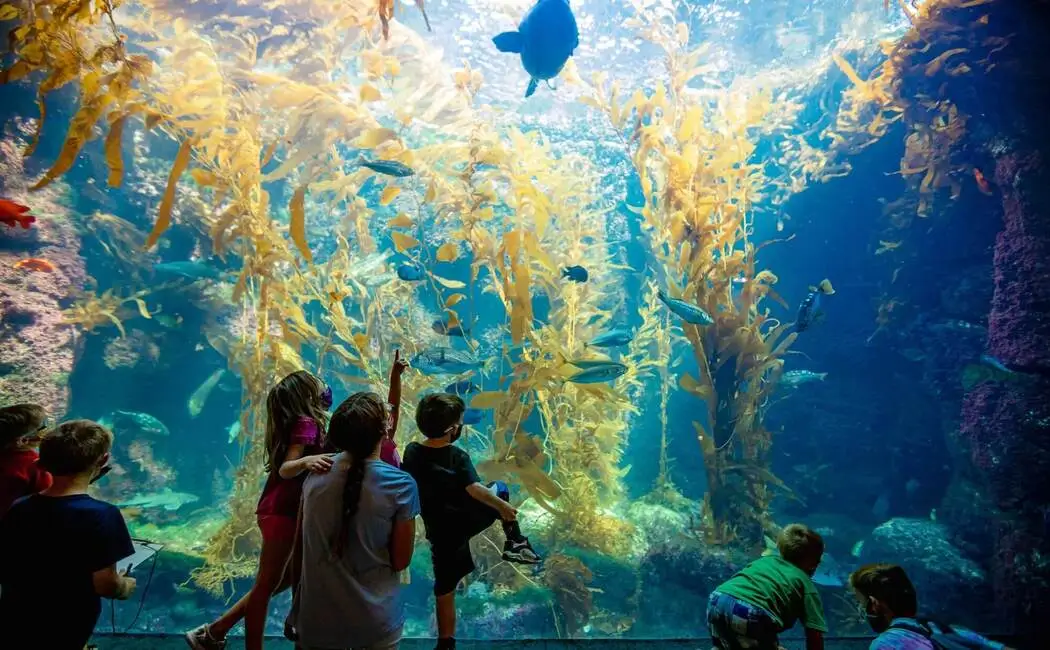
Birch Aquarium at Scripps is the public education center for the world-renowned Scripps Institution of Oceanography at University of California San Diego. Perched on a bluff overlooking the Pacific Ocean, Birch Aquarium features more than 60 beautifully constructed habitats for fish and invertebrates from the cold waters of the Pacific Northwest to the tropical waters of Mexico and beyond. An oceanographic museum showcases research discoveries by Scripps Oceanography scientists on climate, earth, and ocean science and includes interactive elements. (Google Scripps super-star Walter Munk.) Get a diver’s eye view of Leopard Sharks, Moray Eels, and a giant Sea Bass as they weave through the lobby’s immense glass-enclosed Kelp Forest. Experience hands-on moments with colorful sea creatures in the outdoor tide pools. Of special note is the Little Blue Penguin exhibit opened in the summer of 2022. For more info, go to aquarium.ucsd.edu.
Museum of Contemporary Art San Diego
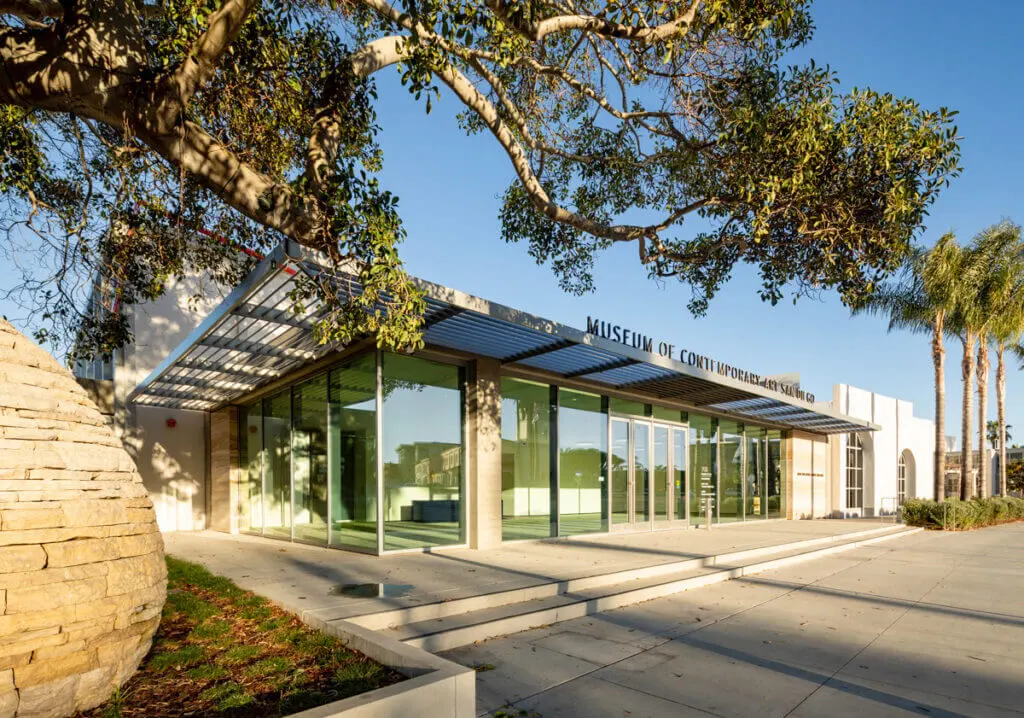
After a $105 million renovation (and a closure lasting almost five years), the Museum of Contemporary Art San Diego in La Jolla (MCASD) reopened in April of 2022 to much fanfare. Now, visitors can enjoy top-notch exhibitions in a one-of-a-kind space, which more than quadrupled during the renovation. The Prospect Street-sited museum, and gift store, with 40,000 square feet of gallery space featuring an exhilaratingly wide panoramic view of the Pacific directly competes with the extraordinary works of art in the expanded galleries.
Museum Background
MCASD La Jolla was founded in 1941 as The Art Center in La Jolla in a space completed by Irving Gill. This oceanfront dwelling served as the last home of Ellen Browning Scripps, a local journalist and philanthropist. The building underwent several renovations throughout the years, including as recently as 1996. Still, the museum’s ever-expanding collection necessitated a further expansion, and in 2014, Selldorf Architects was hired to do the job. Goals with the renovation included providing a new entrance on Prospect St., creating a new art park, and incorporating natural light and the museum’s oceanfront setting. They nailed it.
Tickets
Admission is $25 for adults, $20 for San Diego/Tijuana residents and $15 for students and seniors. People under 17 and military members are free, as are MCASD members. On the third Thursday of the month, admission is free for everyone. Visit mcasd.org/visitlajolla for more information.
The Conrad Prebys Performing Arts Center
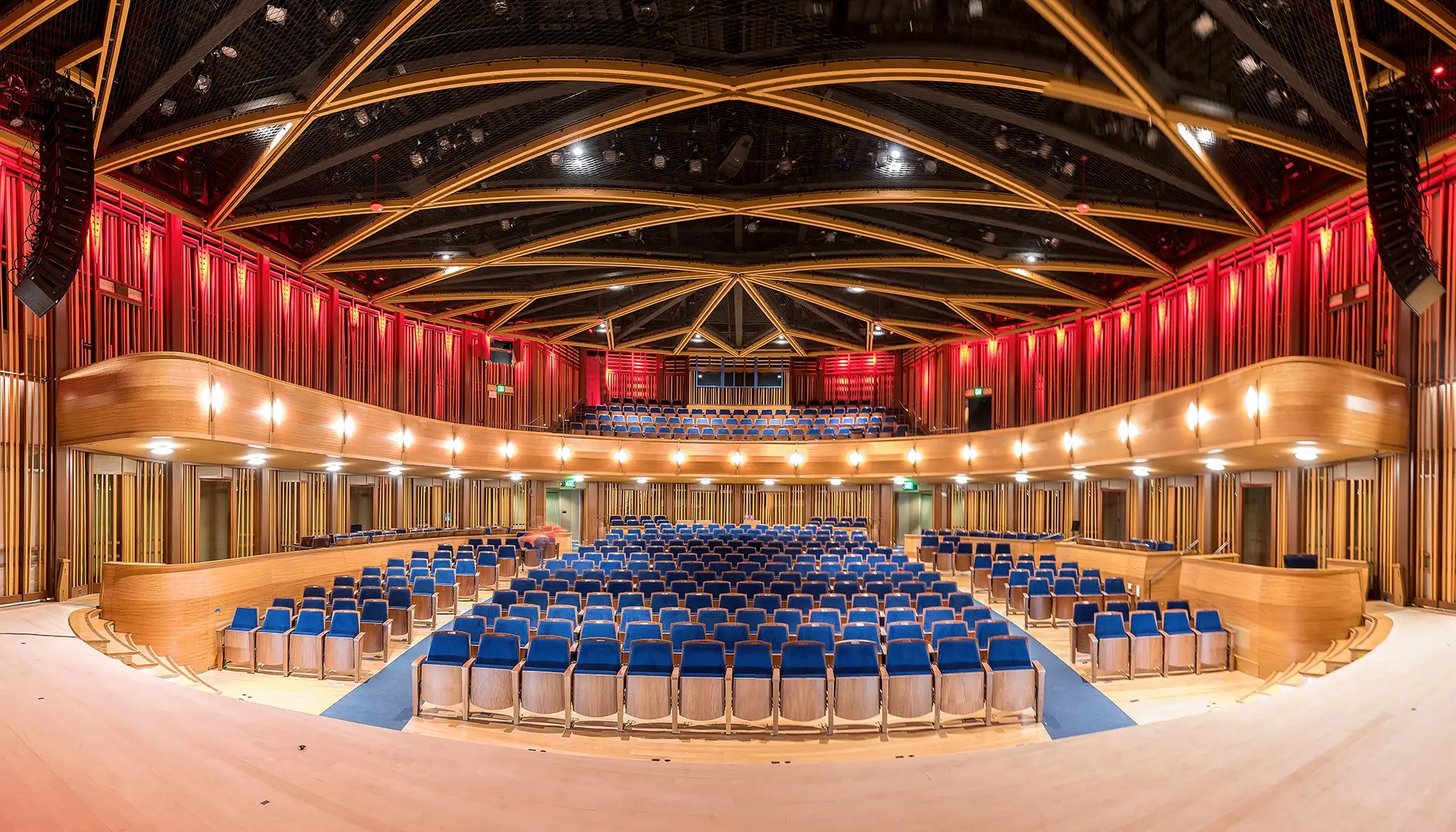
The Conrad Prebys Performing Arts Center, opened in 2019, is the heart of cultural, arts education, and community event activity in La Jolla. The Conrad is the permanent home of La Jolla Music Society and hosts world-class performances presented by LJMS and other local arts organizations. With four outstanding performance and activity spaces, The Baker-Baum Concert Hall, The JAI, The Atkinson Room, and the picturesque Wu Tsai QRT.yrd, The Conrad is an inviting campus for a wide variety of events. While visiting La Jolla, experience a memorable day or evening at the Conrad. For performance schedules see LJMS website at theconrad.org/the-conrad/ or, call 858.459.3728.
The Comedy Store
Loads of Comedy Mixed with Tragedy
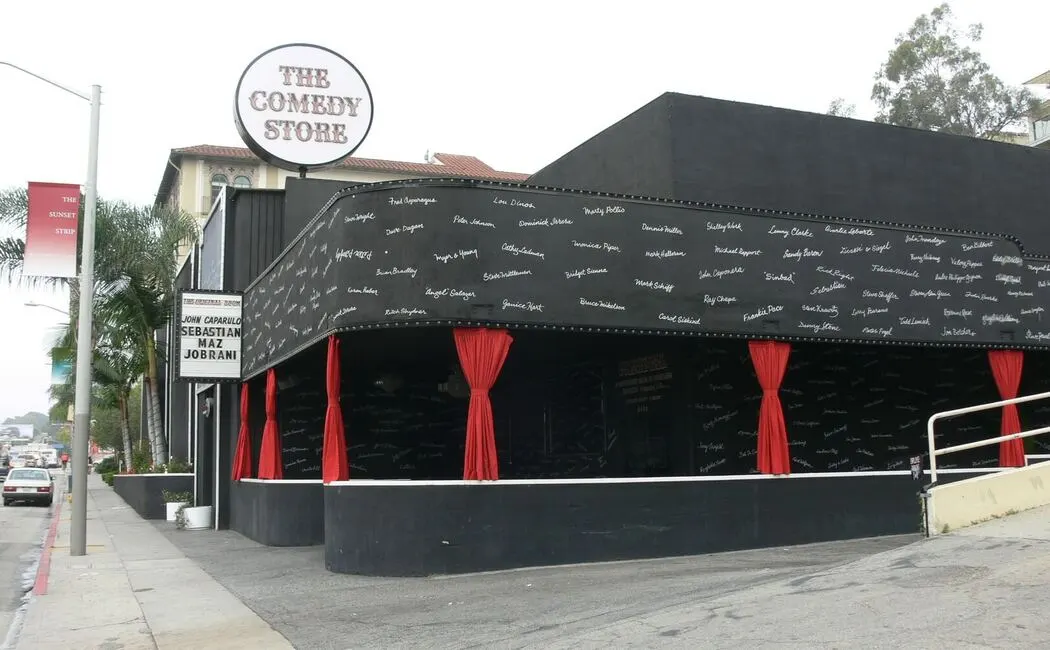
By 1976, The Comedy Store’s popularity in Hollywood and Westwood was gathering steam and favorable press. At that time, Mitzi’s son Scott, a young real estate developer in San Diego, found a room in Pacific Beach that would be perfect for The Comedy Store. It was a 180-seat room with great acoustics on the first floor of the TD Hays Steak and Seafood restaurant, located in PB on the beach. The deal was struck and on Memorial Day weekend and opened shortly thereafter. The room was an instant smash hit and it became The Comedy Store’s first paid professional gig for Mitzi’s comedians. It paid most of the comics’ rent at the time.
A year later Mitzi told the restaurant she was raising the cover charge prices. They balked at the idea, believing it would hurt their drink sales. Mitzi heard from her son Scott about a disco that was available in La Jolla. When she saw the room, Mitzi realized immediately it had perfect acoustics for comedy and she leased the room right away. In August of 1977, The Comedy Store La Jolla opened at its new location on Pearl St. mid block between Fay and Girard, and again, Dave Letterman was on hand to throw out the opening joke. Today, the La Jolla Store provides San Diego comedy fans a professional show featuring Comedy Store pros from Los Angeles every weekend, and popular shows featuring local San Diego professional comics during the week. As Jimmy Durante often said, “Everyone’s tryin’ to get into the act.” It hosts weekly shots for aspiring comics on Tuesdays at 7 pm. Be kind.
The WindanSea Beach Surf Shack
A History
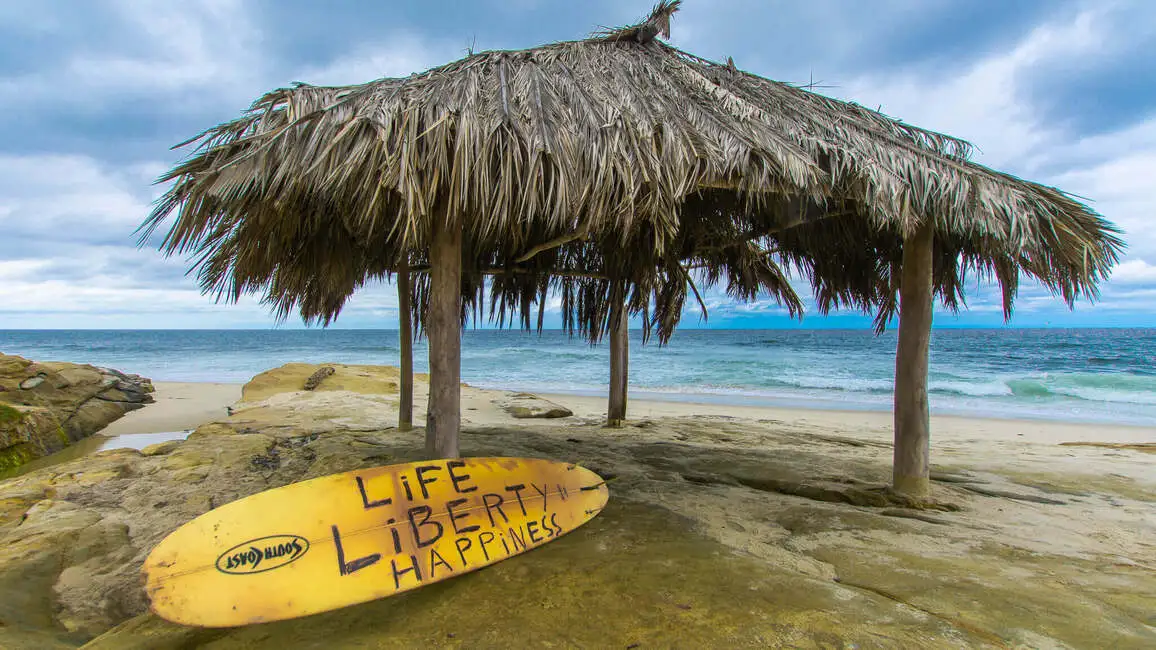
This iconic structure is one of the oldest and most prominent beach landmarks in San Diego. The palm-covered hut was first constructed in 1946 (some say 1947) by Woody Ekstrom, Fred Kenyon and Don Okey, though it’s been destroyed and rebuilt a few times over the years. Just fifty-two years after construction it was officially designated by the San Diego Historical Resources Board in May, 1998. A temporary plaque was installed in March of 2017, but with the incorrect date of its birth as 1953. A new plaque with the correct year replaced the earlier installation in July of 2022.
Eckstrom, Kenyon, and Okey got the idea for the Windansea surf shack in 1946 when Don Okey’s wife asked him to build some shade on the beach for their kids. They went to Scripps Hospital and cut down some eucalyptus trees to build it, with the idea that it would also become a bit of a haven for local surfers. It took some time, but the thatched shack was eventually completed in the summer of 1946. According to sources, they celebrated with a big luau and Hawaiian dancers — celebrations that quickly became hugely popular social events for surfers up and down the coast, getting increasingly rowdier and larger with each year.
The shack was destroyed in a winter storm in 1949, but Kenyon and Okey rebuilt it the next year with help from the other local surfers; the parties had become so unruly and rambunctious that they attracted the attention of local authorities and were subject to multiple police raids. Some sources chronicle the existence of the legendary “Mac Meda Destruction Company,” a ‘party-loving’ underground society of surfers and locals that was known for its rowdiness and propensity for destruction (hence the name). Very much a part of the WindanSea scene, it is said that they held huge parties at the Shack in the 60s despite an ongoing police presence.
Torrey Pines Glider Port
Hang Gliding at its Best
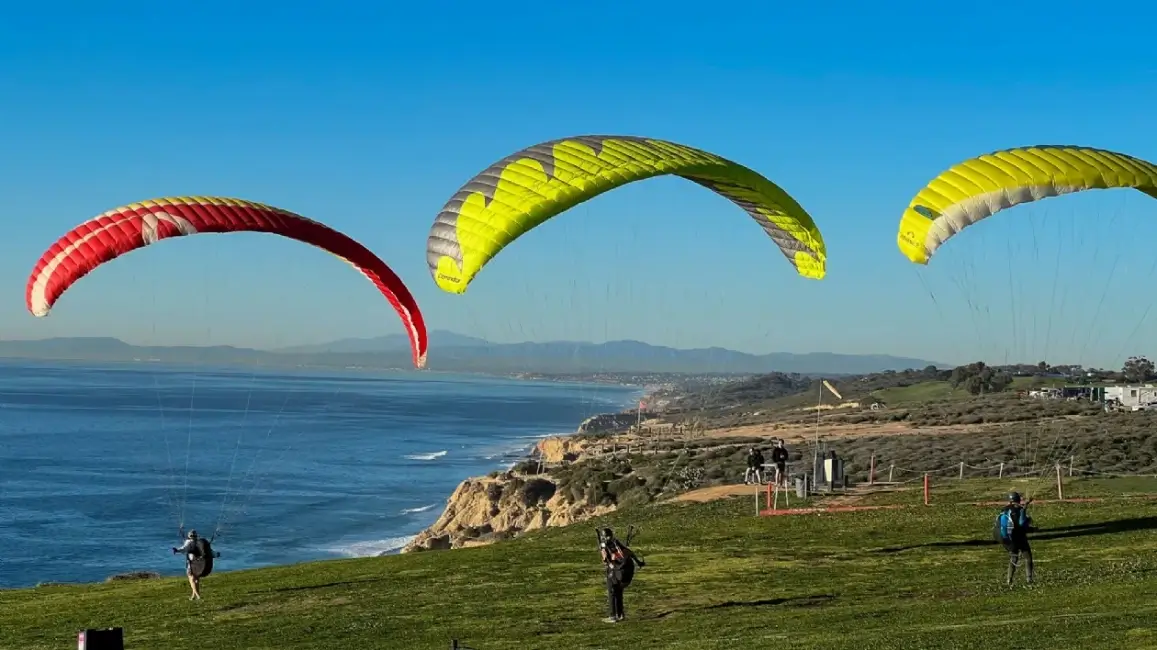
The Torrey Pines Glider port (FAA LID: CA84) is a city-owned private-use glider airport located in the La Jolla neighborhood of San Diego, 11 nautical miles (20 km) northwest of the city’s central business district.
It was first established as a soaring site in 1930, and is the home to hang gliding, paragliding, radio-controlled model sailplanes, and full-scale man-carrying sailplanes. It is listed on the California Register of Historic Places and the National Register of Historic Places. It is considered by glider enthusiasts of all types to be the “Kitty Hawk of the West.”
Full-scale sailplanes are operated by the Associated Glider Clubs of Southern California, only during special permit windows between February and April, while models, hang gliders, and para-gliders fly any time the wind permits. The local Flight Director and restaurant concessionaire maintains and enforces safety rules to protect both pilots and spectators.
The Torrey Pines cliffs have featured soaring aircraft since the 1930s, with many famous aviators earning their wings on the strong ocean breezes. Many aviation pioneers have flown at Torrey Pines. On February 24, 1930, Charles A. Lindbergh made the first soaring flight in a sailplane above the cliffs at Torrey Pines on a flight Mt. Soledad to Del Mar in a Bowlus sailplane. His flight also established a western regional distance record for gliders at the time. His wife, and author, Anne Morrow Lindbergh had qualified as the first American woman to earn a first-class glider license on a flight in a Bowlus sailplane also from Mt. Soledad on January 29, 1930. Between 1930 and 1935, area high school students building and flying gliders in the area began to auto-tow their gliders from the beach at the north end of the cliffs near Torrey Pines State Park, soaring in the lift, and landing on the beach. In 1936, Woody Brown became the first person to launch a glider from the top of the cliffs and land back on the top, thus opening the Torrey Pines Gliderport. Between 1936 and 1940, the gliderport was so popular that San Diego Mayor Percy J. Benbough dedicated the gliderport “to the youth of California” on January 1, 1939.
During World War II, the gliderport and its surroundings were transformed into U.S. Army Camp Callan, an anti-aircraft artillery training facility. After the end of the war, members of the Associated Glider Clubs of Southern California arranged a lease with the City of San Diego and recreational glider operations resumed. By the 1950s, radio-controlled model sailplanes were flown at the site, with hang gliding becoming popular at the site in the early 1970s, and paragliding at the site since the late 1980s.
The gliderport has been the location of several national and international soaring records and is associated with many important individuals in the development of soaring in the United States including Hawley Bowlus, Bud Perl, Bill Beuby, John Robinson, Dick Essery, Bill Ivans, Helen Dick, Richard Johnson, Bill Petre, Robert Cardenas and Paul MacCready. For many years Torrey Pines was also home to the Pacific Coast Midwinter Soaring Championships, one of the longest running annual glider events in United States history.
The Coast Walk
“I’m Walkin’, Yes Indeed…!” – Fats Domino

La Jolla local’s favorite is the popular Coast Walk featuring intense cliff-high Pacific vistas and serene ocean breezes. You can access the Coast Walk Trail, whose trailhead starts near the Cave Shop, home of Sunny Jim’s Sea Cave, and follows an inclined trail overlooking the shores (and flotillas of kayakers) far below. La Jolla Insiders salute local organizer Brenda Fake and her team of volunteers who dedicated a Saturday in May of ’22 to completely rehabilitate the full stretch of trail; pulling weeds and disappearing trash.
For more excellent views, check out the sidewalk that starts at The Cove, where you can stare at the rock-lounging sea lions, ending at the Children’s Pool and the opportunity to walk along a vintage sea wall offering a perfect opportunity to study the harbor seals close by on the sand.
Looking to challenge yourself and get a good workout? Try the rugged hiking paths at Torrey Pines State Park. It’s a few miles north of The Village and a car ride is required, but the travel time is well worth this unique immersion in high desert nature that only the SoCal coast can offer.




